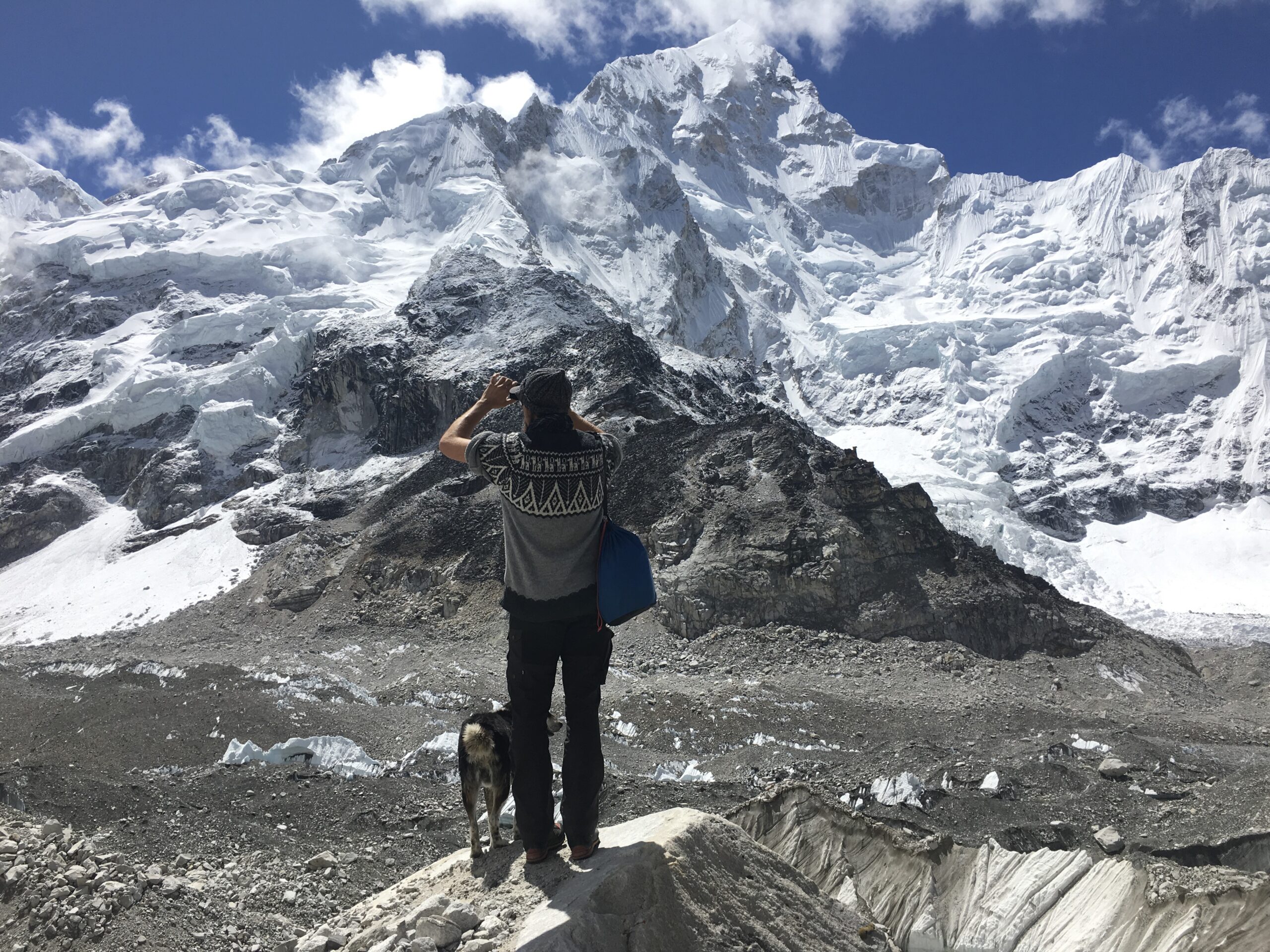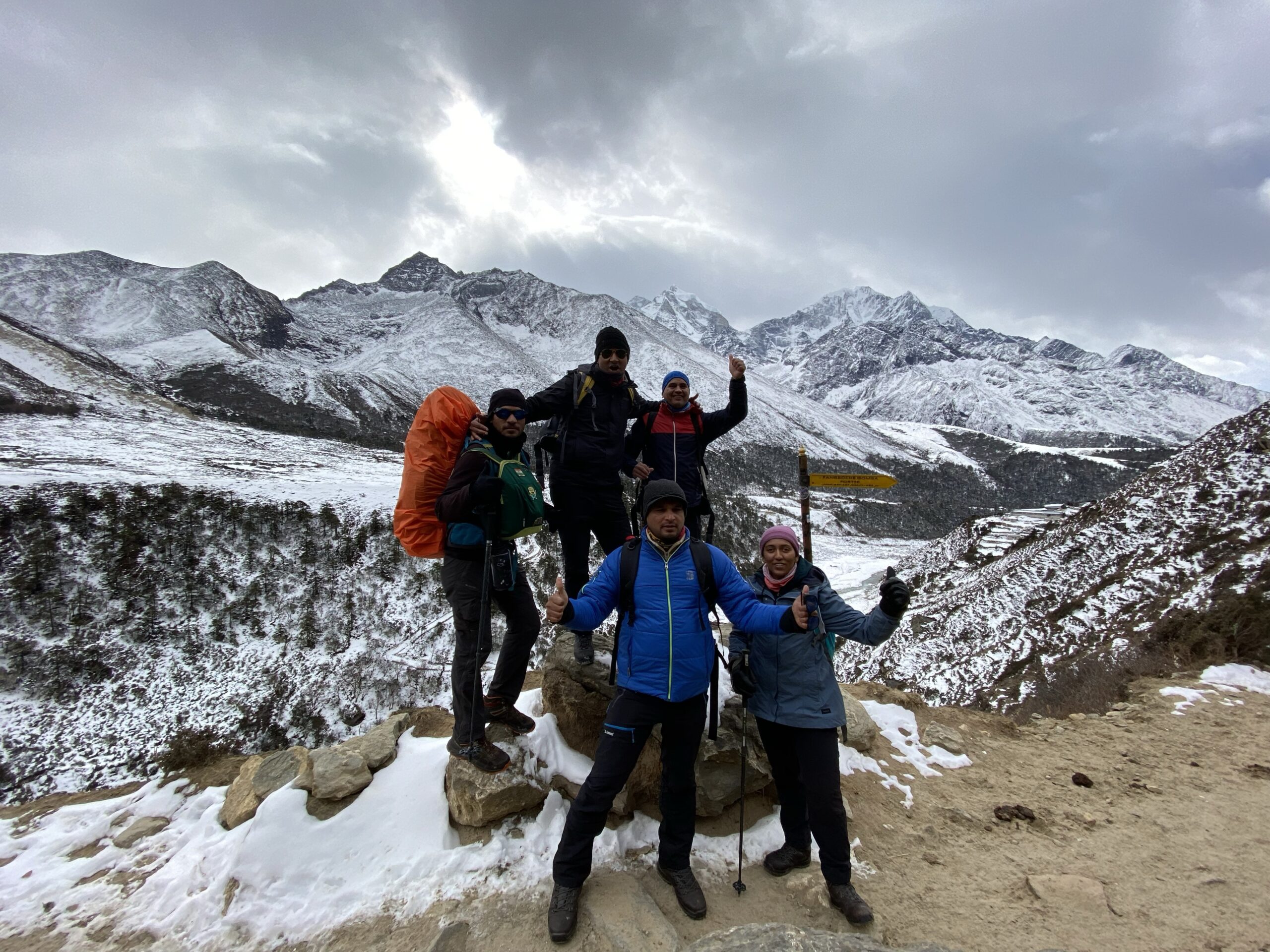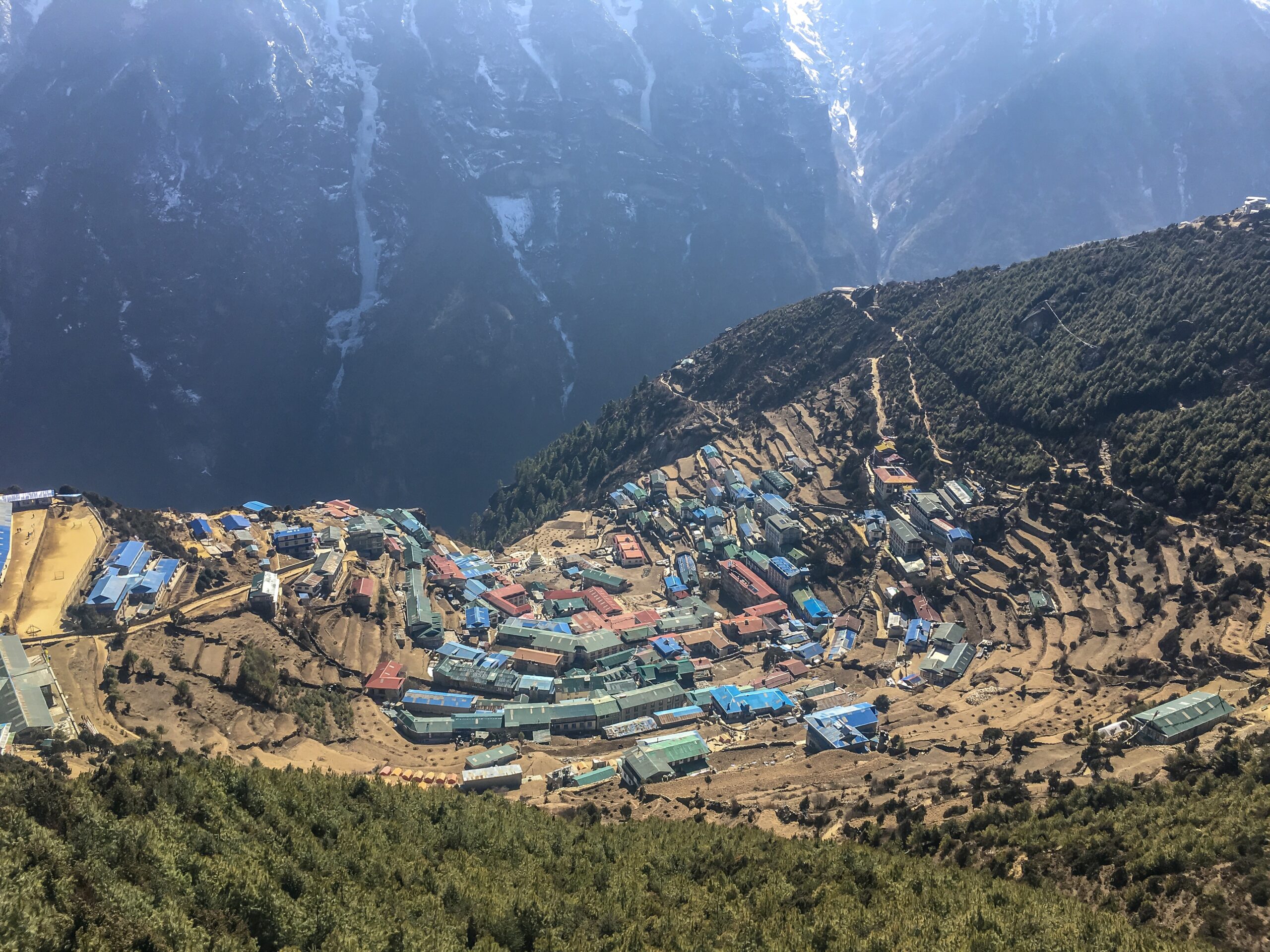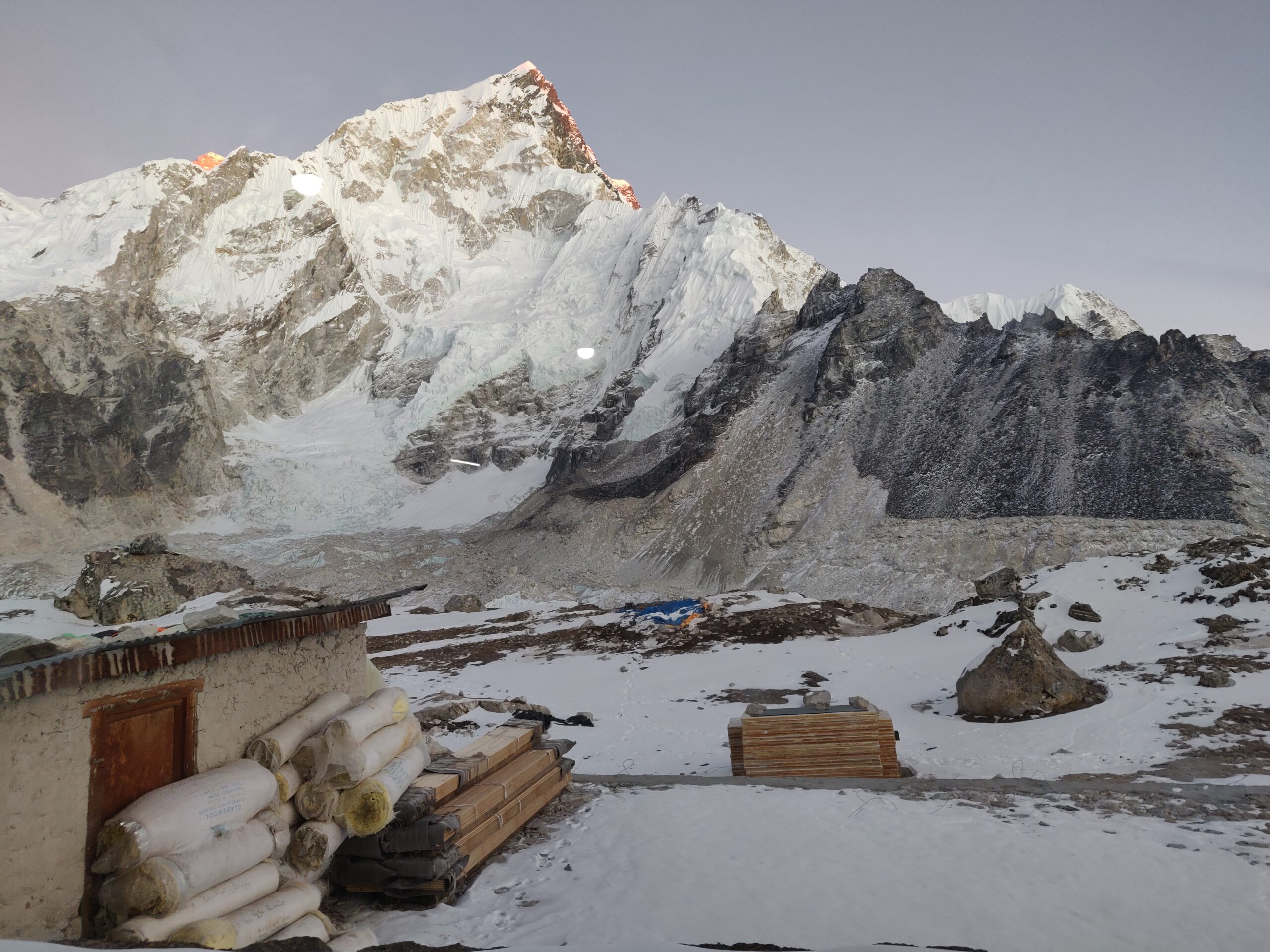Everest Base Camp TREK
OVERVIEW
Trek to Everest Base Camp with ADVENTUREism and accomplish the most exciting, enthralling, and challenging high-altitude trek in the Himalayas.
Take on one of the world’s most exhilarating challenges—trekking to Everest Base Camp (EBC) with ADVENTUREism. This isn’t just a trek, it’s a journey beyond the clouds, through some of the most breathtaking landscapes on Earth, as you stand in the shadow of the mighty Mount Everest.
A Journey for the Adventurous Spirit: The EBC Trek is a once-in-a-lifetime adventure. Imagine walking amidst the world’s tallest peaks, enveloped by pristine natural beauty and a rich tapestry of history. This non-technical trek does not require any prior rock climbing or mountaineering skills, making it the perfect introduction to high-altitude trekking for adventure enthusiasts, both new and seasoned.
In the Heart of the Khumbu Valley: Your adventure will take you to the heart of the Khumbu Valley, where Everest Base Camp is the final stop for those daring enough to glimpse the towering majesty of Mount Everest up close. With an elevation of 8,848 meters (29,029 feet), Everest is the highest peak in the world, named in honor of Sir George Everest. However, in Nepal, the mountain is revered as Sagarmatha, a name that reflects its towering, sky-piercing presence.
Walk in the Footsteps of Legends: Every step of the EBC trek is steeped in history. You will follow the trail taken by Sir Edmund Hillary and Tenzing Norgay, the first to summit Everest in 1953. Their path, through the challenging Khumbu Icefall, is legendary. As you trek, you’ll carry the weight of their monumental achievement in your heart, with awe-inspiring vistas unfolding before your eyes—truly an adventure that will leave an indelible mark on your soul.
When to Embark on Your Adventure: The Everest Base Camp trek is open during three key seasons, each offering a unique experience:
- Spring (March to May): When wildflowers bloom, and the weather is temperate, making it a popular time for trekkers.
- Autumn (September to November): Clear skies and crisp air provide perfect trekking conditions, with stunning views at every turn.
- Winter (December to January): For the brave-hearted, winter offers solitude and serenity, with snow-capped peaks and an added layer of challenge.
Why Choose ADVENTUREism? With ADVENTUREism, you’re not just trekking, you’re immersing yourself in the spirit of adventure. Our expert guides ensure your safety and comfort, allowing you to focus on soaking in the beauty and majesty of this once-in-a-lifetime journey.
Grade: Moderate to Challenging
Duration: 13 nights and 14 days
Altitude – 5364 Meter
Approx Distance – 130 km
TRIP HIGHLIGHTS
Highest altitude of 5,364 m during trek.
Enchanting views from Namche Bazar.
Simple culture and lifestyles of the local Sherpa people
The exquisiteness of the world’s highest peak, Mt. Everest (8,848m)
Mesmerizing views of Mt. Lhotse (8,516m), Cho Oyu (8,201m) and Mt.Makalu (8,463m)
UNESCO World Heritage Sites
Prayer wheels, colorful flags, Mani stones, high suspension bridges
Wide range of flora and fauna
Chance spotting of musk deer, colourful pheasants like Himalayan Monal, Snow Leopard and Himalayan Thar
Highest glacier on Earth- Khumbu Glacier (4900 m)
Panoramic views from Kala Patthar (5,555m)
COST AVAILABLE ON REQUEST
Day 01: ARRIVAL IN KATHMANDU (1,300M) AND TREK PREPARATION
Our journey in Nepal begins today. You get transferred to the hotel and take a rest. In the evening we gather for a welcome dinner of Nepalese cuisine hosted by our team, introducing us to the country’s food culture.
Day 02: KATHMANDU TO LUKLA (2,845M) TO PHAKDING (2,610M)
Early morning transfer to Tribhuvan Domestic Airport for a 30-40 minutes scenic mountain flight from Kathmandu (TIA) to Lukla (Tenzing-Hillary airport), the gateway to the Himalayas. Lukla airport is one of the most dangerous airstrips in the world with just a single runway over a cliff. The journey to the Himalayas begins after registering for a TIMS card at Lukla Tourism Checkpoint. The trail then formally commences entering through Pasang Lhamu Sherpa Memorial gate. As the trail drops down to Thalsaroa and Cheplung, the spectacular vista of the surging Dudh Kosi river roars at the trekkers to accomplish the journey. From Cheplung, the trail crosses through a suspension bridge over Thado Khola and offers the introductory mountain view of Mt Khumbila (5,761m) before reaching Ghat. The trail continues to the first stop of the trek Phakding offering a spectacular demonstration of the prayer wheels, mantras painted Mani stones and gompas. It takes about 1-2 hours of inclined walk to reach Phakding village.
Day 03: PHAKDING TO NAMCHE (3440 M)
After a hearty breakfast, our second day of trekking commences from Phakding. The trail from Phakding leads to various Sherpa villages: Rimijung, Benkar and Chhamuwa which offer serene beauty in the Himalayan region. Climb through the magnificent forest of rhododendrons, fir and Magnolia trees until you arrive at the border of Sagarmatha National Park at Monjo village. Submit your TIMS card and National Park entry card before you move ahead. From Monjo, the trail advances through the Tenzing-Hillary suspension bridge over the Dudh Koshi River in Jhorsale village which is the confluence of the Dudh Koshi and Bhote Koshi rivers. The trek concludes at Namche, the largest tourist hub in the Everest region. Namche has all the amenities to spend the night at a fully accommodated hotel.
Day 04: ACCLIMATIZATION AND EXPLORATION DAY AT NAMCHE
This day at Namche will be for exploration and acclimatization which is necessary to avoid Acute Mountain Sickness (AMS). On this day, the guides arrange short treks from Namche to other Sherpa settlements in the Khumjung valley. The short trip heads towards the Everest view hotel (which is one of the world’s highest hotels) for a tea break and also for a panoramic view of Mt. Khumbila (5,761m), Mt. Thamserku (6,623m), Mt. Everest (8,848m), Lhotse (8,516m) and Ama Dablam (6,812m). We then climb uphill to Khumjung and Knude village with the physically fit trekkers and those who feel tired can return to the lodge at Namche. The climax of the trip is to visit Khumjung Gompa and Khumjung Hillary School, established by Sir Edmund Hillary in 1961. After inspecting Khumjung Gompa and the school, drop down to another Sherpa village Kunde, renowned for Hillary Hospital, the largest hospital in Khumjung region established in 1966.
Day 05: NAMCHE TO TENGBOCHE (3,860 M)
The trek starts early in the morning after a delicious breakfast at Namche. From Namche, the trail ascends uphill for a few hours through dense juniper forest and Sherpa village Kyangjuma and reaches Sanasa, the fork from where Gokyo lake on left and Everest Base Camp on your right routes depart. The trail offers a glorious view of towering peaks Ama Dablam while descending down to the villages of Lawichasa and Tashinga via dense juniper forest. From here the trail steps downward to Phunki Thanga, a beautiful village offering a magnificent view of clustered houses beside Dudh Koshi River, hermitages, an army barrack, a water-driven prayer wheel and green hills under a blue canopy. Walking through the dense and tall rhododendron forest and suspension bridges for about 2 hours from Phunki Thanga you reach Tengboche. The village has the largest Gompa (monastery) in this region, which observes the sacred Mani Rimdu festival in October-November. Overnight stay at a lodge at Tengboche.
Day 06: TENGBOCHE TO DINGBOCHE (4,410 M)
From Tengboche a stone paved trail for 15-20 minutes takes you to Debuche. Visit Debuche Nunnery for a spectacular glimpse of thangka paintings, mural paintings and architectural richness. The trail then traces towards the junction of Pangboche through the dense forest and suspension bridges over the surging Imja River. From here, the trail follows the arid landscape and boulders with a closer view of Ama Dablam Peak (6856m) and finally comes across the flat trail ahead Orso. Walking uphill from Orso along Imja River offers a pristine view of the Himalayas which inspires trekkers to continue the journey to Dingboche. For tourists, ‘The summer valley’, Dingboche is the ideal stop for a night stay and acclimatization.
Day 07: ACCLIMATIZATION AND EXPLORATION AT DINGBOCHE
As the trail takes an elevation above 4000 m, trekkers could feel symptoms of Acute Mountain Sickness (AMS). Therefore, as per health expertise, Dingboche is the perfect place for final acclimatization. Hiking at Dingboche is the best way to enjoy your rest day, climate, landscape, tradition, in Chhukung valley. The sun appears late till evening and the breeze is soft, so the short excursion to NangkarTshang peak (5,616m) is awe-inspiring. The trail to NangkarTshang is steep uphill and demands extra physical stamina; but your struggle becomes worth it as it offers the glistering sight of Island Peak (6,189 m), Thamserku (6623 m), Ama Dablam (6,856 m), Mt. Makalu (8,463 m) along with other few peaks. Also, visit Nangkar Tshang Gompa on the way to your return to Dingboche. Wipe out the sweat and enjoy the sun bask and accommodation at the lodge at Dingboche.
Day 08: DINGBOCHE TO LOBUCHE (4,940 M)
After breakfast at Dingboche you take the trail through rocky boulders to Dusa and inclines along the ridge to Dughla village. The ridge offers a fantastic view of countless peaks: Taboche (6,542m), Cholatse (6,440m), Ama Dablam (6,856m), Pumori (7,161m), Khumbutse (6,636) and Lhotse (8,516m) which makes the strenuous trail easy and painless. From Dughla, the trail traces along the glacial moraine formed by Khumbu.
Day 09: LOBUCHE TO GORAKSHEP (5,164M) – EVEREST BASE CAMP (5,364M) TO GORAKSHEP (5,164M)
Today is our main day to reach Everest Base Camp and complete our mission. The concluding trail to Everest Base Camp traces from Lobuche through narrow mountain gaps, glacial moraine alongside the world’s highest glacier, Khumbu glacier. As the trial elevates higher, some may feel symptoms of AMS like mild headache. Walk slowly but steadily to avoid AMS. After walking for 2-3 hours through rocky path, we reach the last human settlement, Gorakshep. The climate of the village is too cold as it is located at an elevation of 5,164 m. Gorakshep is the junction from where the path separates into Kalapatthar and Everest Base Camp. Only physically fit trekkers can ascend and descend Kala Patthar on the same day while other trekkers keep the hike to Kala Patthar for the next day. The trail from here gets more strenuous till the Everest Base Camp. On arrival at base camp enjoy the tranquil scenery of Khumbu icefall & the sparkling view of mountain peaks. Celebrate your triumph. Observe the 360-degree Himalayan range, pose for the photo, take rest before heading to Gorakshep.
Day 10: TREK FROM GORAKSHEP TO KALAPATTHAR (5,545M) AND GORAKSHEP TO PHERICHE (4,371M)
The other main highlight of the trek is the side trip to Kala Patthar summit (5,644m). It takes almost 2-3 hours to reach Kala Patthar from Gorakshep. So, many trekkers kick off their trek before dawn. If clouds don’t roll down quickly then the summit offers the gleaming view of Mt. Everest (8848m) along with Lingtren (6,749m), Khumbutse (6,636m), Nuptse (7,861m), Pumori (7,161m). Capture the Himalayan range in your soul or camera and also savor a tantalizing panorama at the peak for a few hours before descending to Gorakshep. After breakfast at Gorakshep, the journey from the land of Himalayas descends the same route towards the Sherpa village Lobuche. At Dhugla, the trail stops at a fork which leads to Dengboche or Pheriche. Following the route of Phulaji Kala village, stroll down towards the wide valley, Pheriche. The village is famous for the elementary health camp that is run under Himalayan Rescue Association (HRA). The health camp provides emergency health service and education about AMS to the trekkers. Today, we sojourn at Pheriche.
Day 11: PHERICHE TO TENGBOCHE (3,860M)
We’ll be trekking down the trails of the hillside covered by rhododendron trees towards Tengboche. During spring, the surroundings would be as colorful as magic in nature. Our trek will cross the bridge over the Imja Khola and head into the forest of Juniper. As we walk along a level of the path of ground through the forest, the trail continuously drops down to Orso following the west bank of Imja river and then to Somare. Again, the trail drops down to Pangboche along Imja khola and climbs up to Debuche and Tengboche through dense forest.
Day 12: TENGBOCHE TO NAMCHE (3,440 M)
Today’s trek descends from Tengboche to the most commercial hub, Namche. From Tengboche, descend to Phunki Thenga and again ascend to Sanasa following the same route. The trail presents a relaxing sight of picturesque landscapes and mountains while climbing the ridge to Namche which is a perfect place to celebrate your achievement. Have fun with international cuisine and chilled beverages at your lodge or at restaurants in the evening.
Day 13: NAMCHE TO LUKLA (2,845 M)
After breakfast at Namche, like the other normal days, the trek resumes down the steep path to Lukla crossing the Dudh Koshi River and Suspension bridge. The small Gompas, rhododendron forest, and pleasant environment en route bewitch the trekkers. Walking for a few hours from Namche – the dense village in the Himalayan region, Lukla appears fascinating from a distance. Enjoy happy hour at Lukla by playing billiards, exploring the pubs or sipping beverages. Overnight, stay at an accommodated lodge in Lukla.
Day 14: LUKLA TO KATHMANDU FLIGHT DURATION: (30 MINUTES FLIGHT) & FINAL DEPARTURE
The Everest Base Camp trek concludes after a 30-minute scenic flight from Lukla to Kathmandu. Shift your seat to an opposite direction than your previous flight for the overall view of the daunting landscape. After landing at TIA, you will be transferred to your respective hotels.
Your adventure in Nepal comes to an end today! We will take you to the airport, approximately 3 hours before your scheduled flight.
Note: The Itinerary will be always dynamic and can be customized if needed.
INCLUSIONS
- Arrival and departure transfer services to and from Kathmandu International airport as per itinerary
- Domestic Flights (Kathmandu – Lukla – Kathmandu).
- Assistance at the International airport while arriving and departing in Nepal.
- Hotel/Hostel accommodation in Kathmandu on B/B basis.
- Full board tea house accommodation with breakfast, lunch, dinner during trek.
- Trekking Permit (Sagarmatha National Park Permit).
- Local Government, Khumbu Pasang Lhamu Rural Municipality Royalty and fees
- Staff Inclusions: - Qualified trek leader and WFR/Guide (06 or above trekkers: 1 assistant guide).
- All wages, equipment, medical and accidental Insurances for all involved staff in trekking and expedition.
- Equipment allowances and wages for Government Liaison Officers.
- Crisis management apparatus – VHF 2-way radio, basic first aid kit and an on call vehicle.
- Weight Restriction per trekker – 10kg
- Free assistance service for Cargo clearance and Duties.
- Our service charge and Government Taxes levied in Nepal.
- Complete pre-departure information.
- Support in Flight ticket reconfirmation.
EXCLUSIONS
- International flight airfare.
- Lunch and dinner during your stay in town/city.
- Any packed food/snacks, aerated drinks, energy drinks, mineral water, alcohol, cigarettes, Chocolates, energy bars during trekking.
- Items of personal nature, laundry expenses, tips.
- Any extra expenses arising out of various/unforeseen situations like natural calamities, landslides, political disturbances, strikes, changes in Government regulations, etc.
- Extra transportation than displayed in the itinerary program.
- Porter to help trekkers luggage. (2 trekkers:1 porter “10 kg per trekker max limit")
- Any additional staff other than specified.
- Rescue, repatriation, medicines, medical tests and hospitalization expenses.
- Medical insurance and emergency rescue evacuation if required.
- Travel insurance and helicopter rescue.
- Tips to porters and staff.
- Personal clothing & climbing gears.
- Expenses incurred towards usage of landlines, mobiles, walkie-talkies or satellite phone
- Personal expenses like shopping, snacks, bar bills, bottle or boiled water, shower, Wi- Fi, laundry, telephone call, battery re-charge fee, extra porters etc.
- Anything not specifically mentioned under the head "Prices included".
All expenses that are not listed under inclusions shall be considered as exclusions.
MORE TREKS
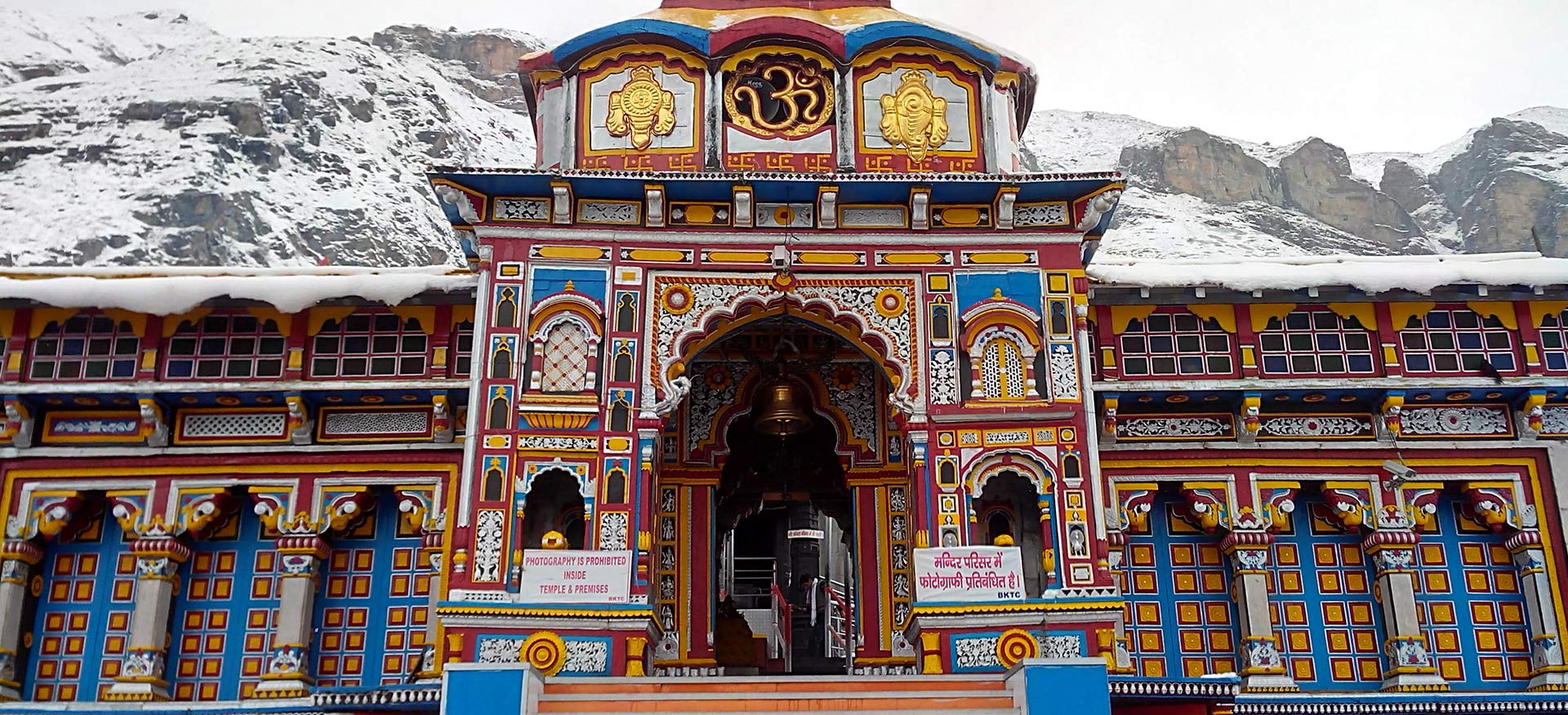
Old Badrinath Trek
Old Badrinath trail was used by pilgrimages when there was no means of transport to reach the Badrinath temple which is one of the four important Char Dham…
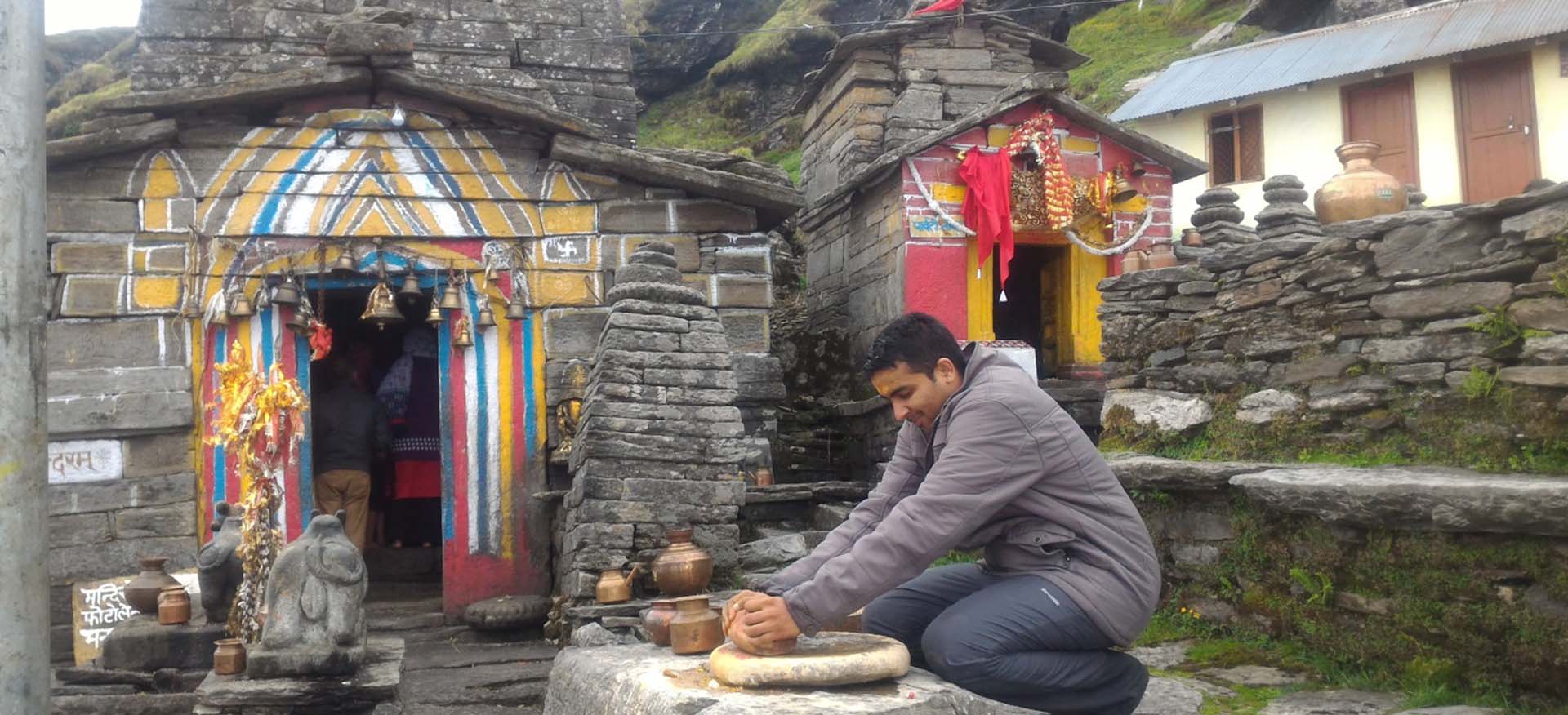
Chopta Trek
Chopta Deoria Tal area is an unspoiled bit of the Garhwal Himalaya. The forest is that of oak and rhododendron interspersed with pine. The lake is nestled in…


